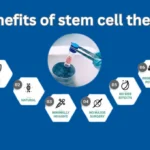
Halting Scarring: A Look at Fibrosis Inhibition
Fibrosis is a complex biological process characterized by the excessive accumulation of extracellular matrix components, including collagen, which can lead to the scarring of various tissues and organs.
This scarring process interferes with the normal function of the affected organs, making Fibrosis a significant contributor to morbidity and mortality in diseases such as pulmonary Fibrosis, liver cirrhosis, and renal Fibrosis.
The inhibition of Fibrosis, therefore, represents a crucial area of medical research, focusing on developing strategies and therapies to prevent or reduce this pathological tissue remodeling.
Understanding the Biological Basis of Fibrosis
At the heart of Fibrosis is the pathological accumulation of collagen and other extracellular matrix proteins in the tissue. This is often a response to chronic inflammatory stimuli, persistent injury, or damage.
Fibroblasts, the primary cells involved in the extracellular matrix synthesis, transform into myofibroblasts in fibrotic conditions. These myofibroblasts have enhanced capabilities for collagen deposition and can contract, further distorting the tissue architecture and function.

Current Therapeutic Approaches and Anti-fibrotic Strategies
Several therapeutic approaches have been developed to manage and inhibit Fibrosis. These include:
Pharmacological Interventions
Involves drugs that specifically target molecular pathways involved in the activation and proliferation of fibroblasts or the synthesis of extracellular matrix components.
Biological therapies
Leveraging biological agents, such as antibodies or small molecules, specifically targeting fibrotic pathways. For example, drugs that modulate the immune system’s response or directly inhibit the action of growth factors involved in fibroblast activation.
Gene Therapy
A newer approach that involves modifying the genes involved in fibrotic processes, aiming to reduce or prevent the pathological deposition of matrix proteins.
Advances in Molecular Targets and Drug Development
Research into the molecular mechanisms of Fibrosis has identified numerous potential targets for anti-fibrotic drugs. These include growth factors like TGF-beta, connective tissue growth factors, and enzymes like matrix metalloproteinases, which are involved in the breakdown of extracellular matrix components.
By targeting these molecules, researchers aim to develop more effective anti-fibrotic therapies or other stem cell therapy that can arrest or even reverse the progression of fibrosis in affected tissues.
Clinical Trials and the Future of Fibrosis Treatment
The path to bringing new fibrosis treatments to market involves rigorous clinical trials that test the efficacy and safety of new drugs. In recent years, there has been an increase in clinical trials focusing on anti-fibrotic treatments, reflecting the growing recognition of the burden of fibrotic diseases.
The outcomes of these trials are eagerly anticipated, as they promise to bring new hope to patients suffering from chronic fibrotic conditions.

Conclusion
The inhibition of Fibrosis represents a significant and rapidly evolving field of medical research. With ongoing advances in understanding the molecular basis of fibrosis and the development of targeted therapies, there is hope that future treatments will be more effective in managing and preventing this challenging condition.
As research continues to advance, the goal of significantly mitigating the impact of fibrotic diseases on human health becomes increasingly attainable.










